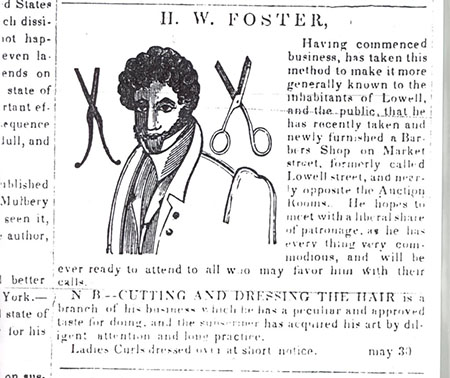Visualize Lowell’s Black History Trail was a pop-up trail made up of zip-tie signs at sixteen stops installed by DIY Lowell volunteers in 2021. It was produced in collaboration with Free Soil Arts Collective. Topics were selected by a committee of Black-identifying Lowellians and history facts were researched by volunteers with help from Allison Horrocks of Lowell National Historical Park, Robert Forrant of University of Massachusetts Lowell, Martha Mayo of the Center for Lowell History, Maritza Grooms, and Awo Adu of Free Soil Arts Collective.
This webpage archives the information on the signs and additional facts that couldn’t fit on the signs. The location of the trail and all stops are archived on the Mosaic Lowell Cultural Map.
- AME Zion Church
- Nathaniel Booth – Mechanics Hall
- Lowell Cloth – Lowell Manufacturing Company (Market Mills)
- Frederick Douglass – Huntington Hall
- Walker Lewis – Lowell House Hotel
- Lura Smith – M.L.K. Jr. Way
- Caroline Van Vronker – Lowell High School
- John Levy – Old City Hall
- Underground Railroad – St. Anne’s Church
- YWCA and the NAACP – Former Lowell YWCA
- The Lew Family – Lew Family Square
- Birdie Malbory
- Displacement – The Hale/Howard District
- Betsy Cornwell
- Network to Freedom
- Amistad – Former St. Paul’s Church
Who is on the Logo?
You may be wondering who the woodcut in the “Visualize Lowell’s Black History” represents. This is Horatio W. Foster, one of the most dedicated abolitionists in Lowell. A barber by trade, Foster was a mixed race man living in Lowell during the 1840s. Foster spent much of his time spreading the ideas of abolitionism throughout the city and state. An active supporter of William Lloyd Garrison’s “The Liberator” as well as Frederick Douglass’ “The North Star”, Foster sold subscriptions and wrote articles for both papers
When women from Lowell were interested in forming an anti-slavery society, they went to Foster for help. He used his connections to help them get guidance from Maria Weston Chapman, an abolitionist organizer in Boston. Foster also served the community by organizing events and fundraisers for the cause. Before a large abolitionist picnic in 1843 he invited “all the abolitionists in the county and roundabout” to come to “a great day of jubilee and thanksgiving.”
The woodcut we use in our logo accompanied advertisements for his business in a regional newspaper. In addition to styling and barbering, Foster also made a hair compound that he sold. It is unknown whether this is a “stock” image or a woodcut of Foster himself, but regardless, advertising in the papers with any kind of possible likeness was a major move for a Black entrepreneur when a man of his lineage was a candidate to be IN an ad as a runaway or product for sale. The representation of him in the paper that we have emphasizes his skill and humanity—what he chose to offer the world, not what he could be sold for.
Thanks Lowell National Historical Park (Facebook post)


